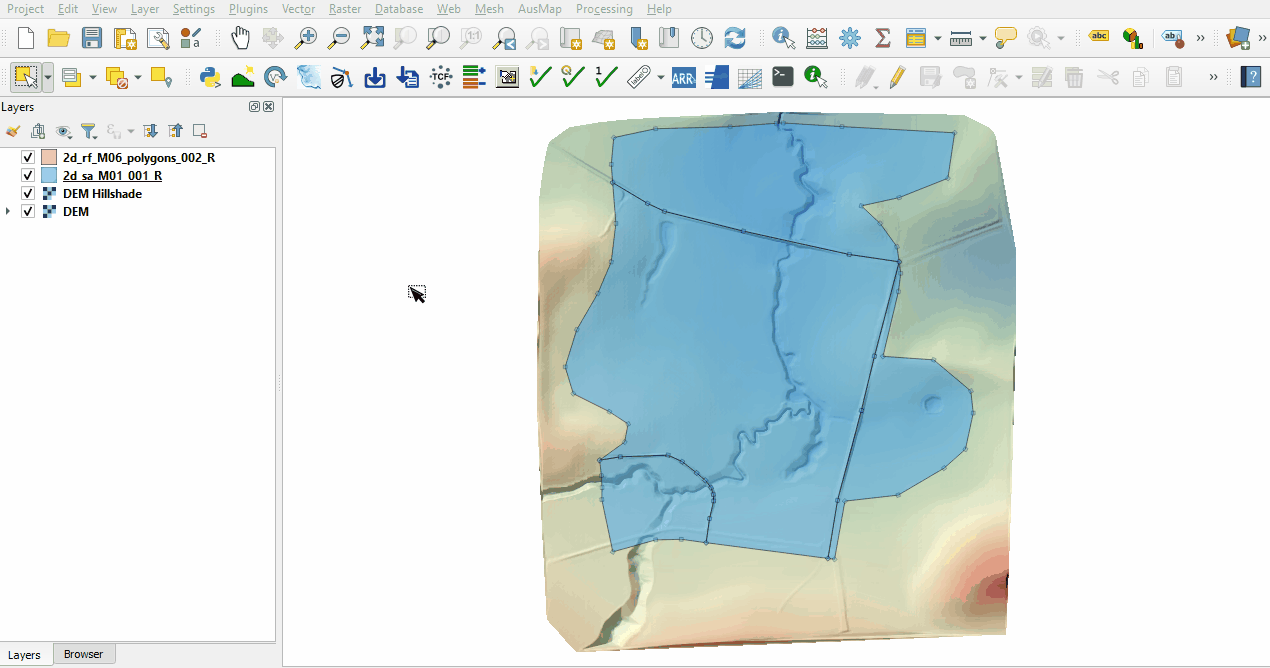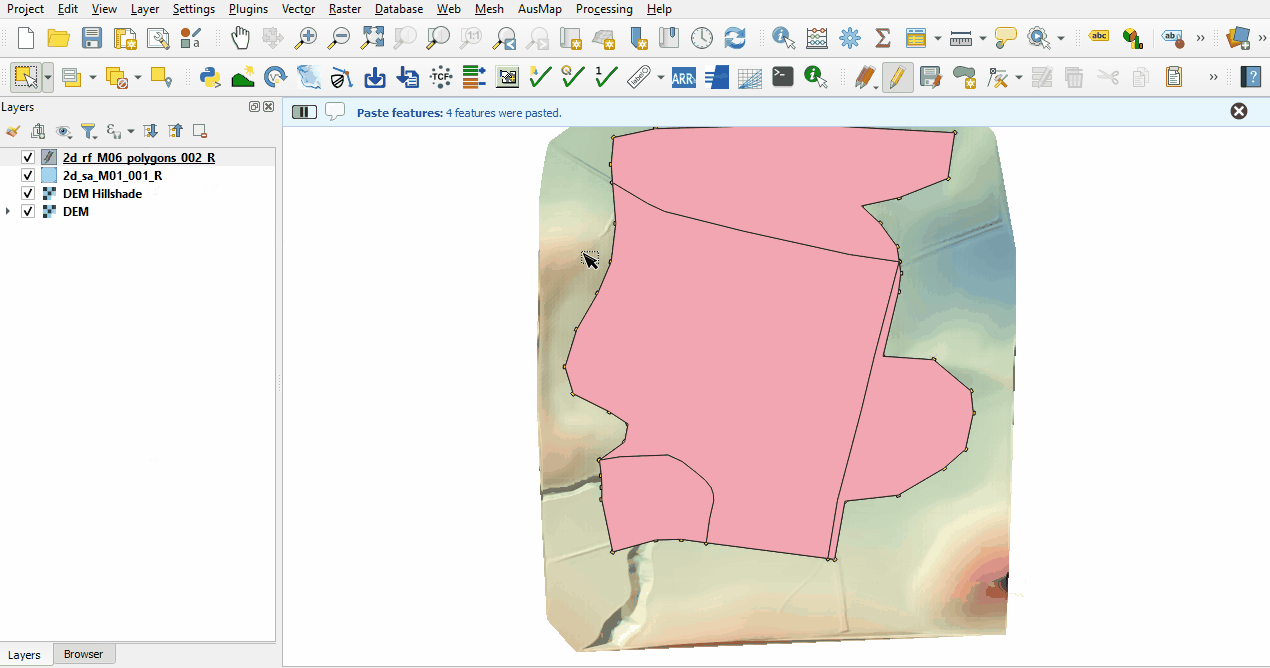Difference between revisions of "Tutorial M06 002 GIS Inputs QGIS GPKG"
Jump to navigation
Jump to search
(Created page with "<span style="color:#FF0000"> <font size = 18>Page Under Construction</font> </span> = Introduction = QGIS is used to create, import and view input data.<br> <br> = Method = C...") |
|||
| Line 7: | Line 7: | ||
= Method = | = Method = | ||
| + | Set up the GeoPackage Database: | ||
| + | <ol> | ||
| + | <li>Navigate to the '''Module_06\TUFLOW\model\gis''' folder. Save a copy of '''M02_001.gpkg''' as '''M06_002.gpkg'''. | ||
| + | <li>Within the QGIS Browser Panel, right click on 'Favorites' and select 'Add a Directory...'. | ||
| + | <li>Navigate to the '''Module_06''' folder and select it. | ||
| + | </ol> | ||
| + | |||
Create a 2d_rf layer with digitised polygons based on the input rainfall hyetographs: | Create a 2d_rf layer with digitised polygons based on the input rainfall hyetographs: | ||
<ol> | <ol> | ||
| − | <li>Click on the ‘Import Empty File’ tool from the TUFLOW | + | <li>Click on the ‘Import Empty File’ tool from the TUFLOW plugin toolbar. |
<li>Select '2d_rf' from the Empty Type list. | <li>Select '2d_rf' from the Empty Type list. | ||
<li>In the Run ID box write: 'M06_polygons_002'. | <li>In the Run ID box write: 'M06_polygons_002'. | ||
| − | <li>Tick the 'Regions' Geometry Type and hit 'OK'. The | + | <li>Tick the 'Regions' Geometry Type. |
| + | <li>In the Spatial Database Options, select 'All to one'. Navigate to the '''Module_06/TUFLOW/model/gis''' folder and select '''M06_002.gpkg'''. Click Save and hit 'OK'. | ||
| + | <li>The '''2d_rf_M06_polygons_002_R''' appears in the QGIS Layers Panel. | ||
</ol> | </ol> | ||
| + | |||
The same catchment breakup is used as the 2d_sa layer: | The same catchment breakup is used as the 2d_sa layer: | ||
| − | <ol><li> | + | <ol> |
| + | <li>Load in the '''2d_sa_M01_001_R''' layer from '''M06_002.gpkg''', either: | ||
| + | :*Within the QGIS Browser Panel, navigate to '''M06_002.gpkg''' and double click the layer, or | ||
| + | :*In File Explorer, drag and drop the '''M06_002.gpkg''' into the QGIS workspace and select the layer. | ||
<li>Copy and paste the polygons from the 2d_sa layer into the 2d_rf: <br> | <li>Copy and paste the polygons from the 2d_sa layer into the 2d_rf: <br> | ||
<br> | <br> | ||
Revision as of 15:23, 14 June 2023
Page Under Construction
Introduction
QGIS is used to create, import and view input data.
Method
Set up the GeoPackage Database:
- Navigate to the Module_06\TUFLOW\model\gis folder. Save a copy of M02_001.gpkg as M06_002.gpkg.
- Within the QGIS Browser Panel, right click on 'Favorites' and select 'Add a Directory...'.
- Navigate to the Module_06 folder and select it.
Create a 2d_rf layer with digitised polygons based on the input rainfall hyetographs:
- Click on the ‘Import Empty File’ tool from the TUFLOW plugin toolbar.
- Select '2d_rf' from the Empty Type list.
- In the Run ID box write: 'M06_polygons_002'.
- Tick the 'Regions' Geometry Type.
- In the Spatial Database Options, select 'All to one'. Navigate to the Module_06/TUFLOW/model/gis folder and select M06_002.gpkg. Click Save and hit 'OK'.
- The 2d_rf_M06_polygons_002_R appears in the QGIS Layers Panel.
The same catchment breakup is used as the 2d_sa layer:
- Load in the 2d_sa_M01_001_R layer from M06_002.gpkg, either:
- Within the QGIS Browser Panel, navigate to M06_002.gpkg and double click the layer, or
- In File Explorer, drag and drop the M06_002.gpkg into the QGIS workspace and select the layer.
- Copy and paste the polygons from the 2d_sa layer into the 2d_rf:

- Open the attribute table of the 2d_rf layer and make the following edits:
- Update names to match the names in the rainfall_stations.csv input data (RF_FC04, RF_FC05, RF_FC06, RF_FC07)
- f1: 1
- f2: 1
- Turn off editing to save the edits.

Conclusion
- Polygons have been digitised based on input rainfall hyetographs.
| Up |
|---|